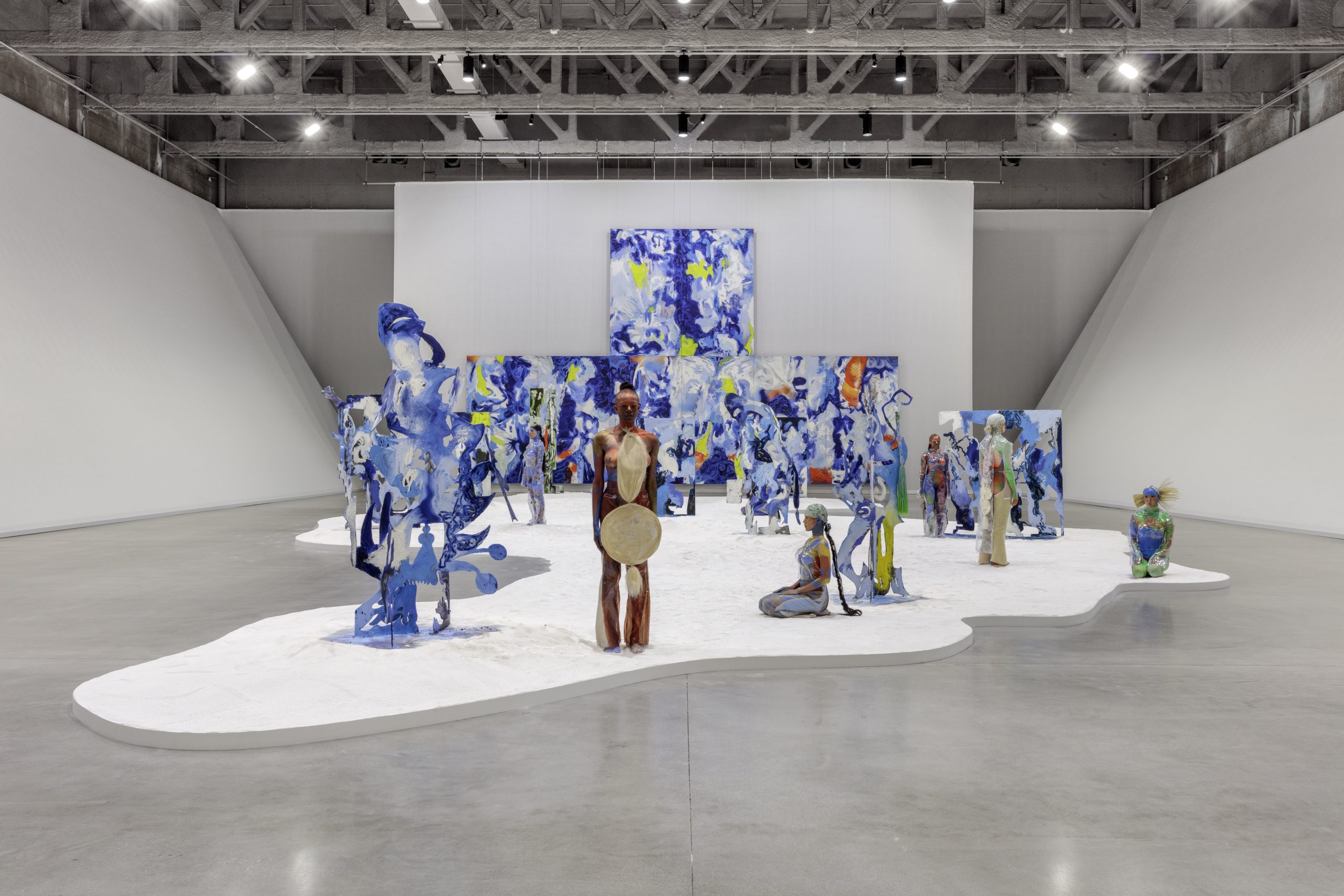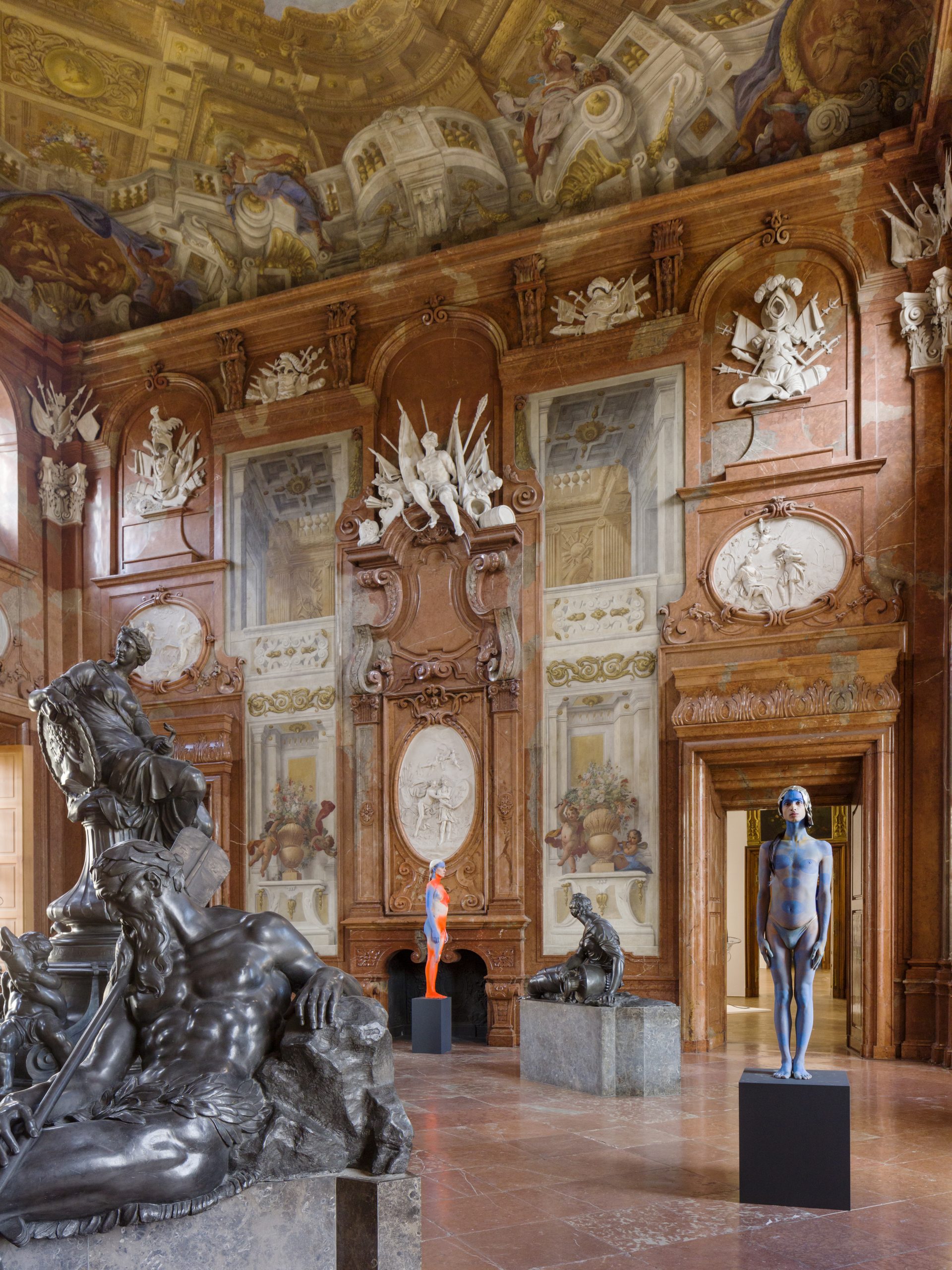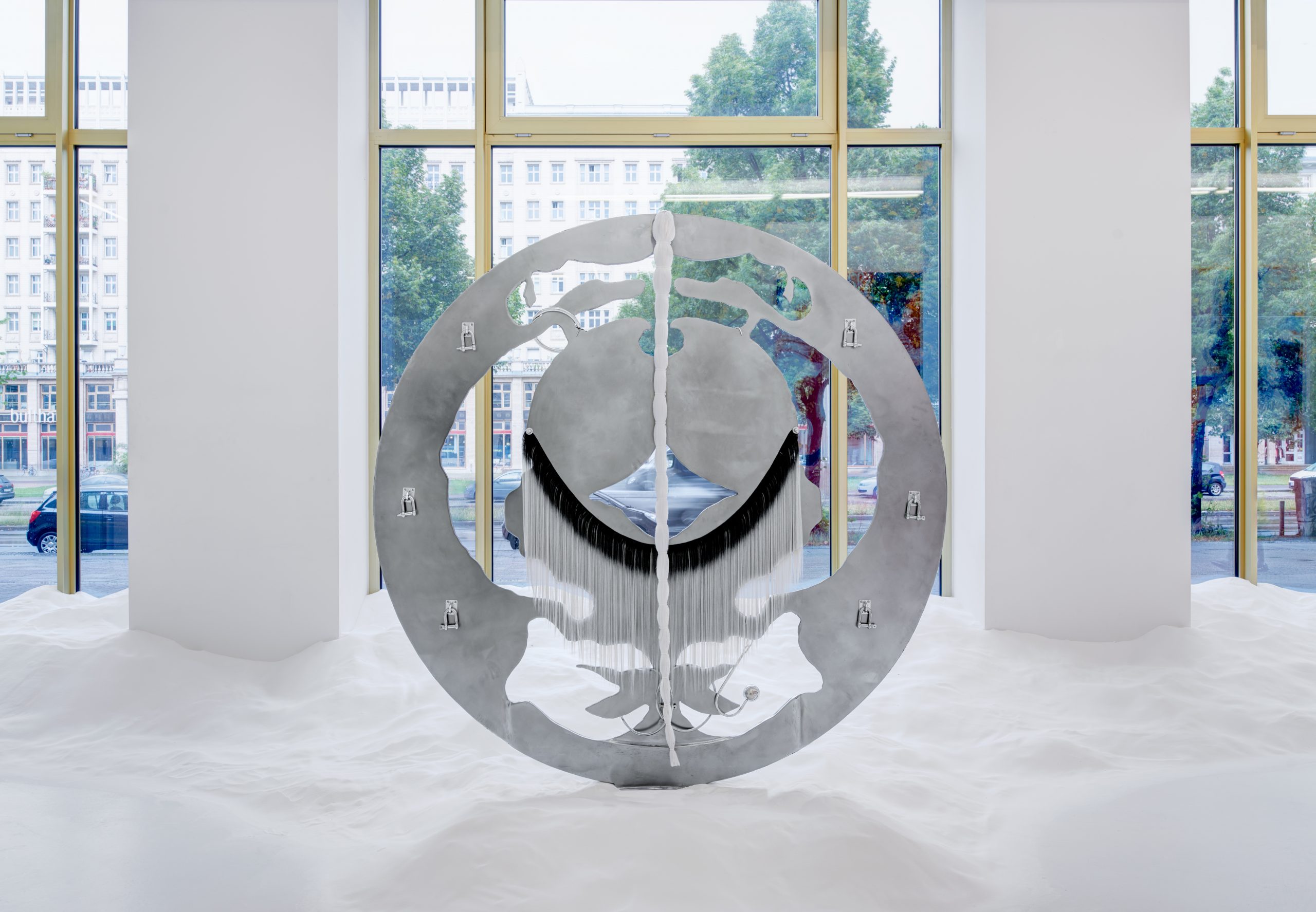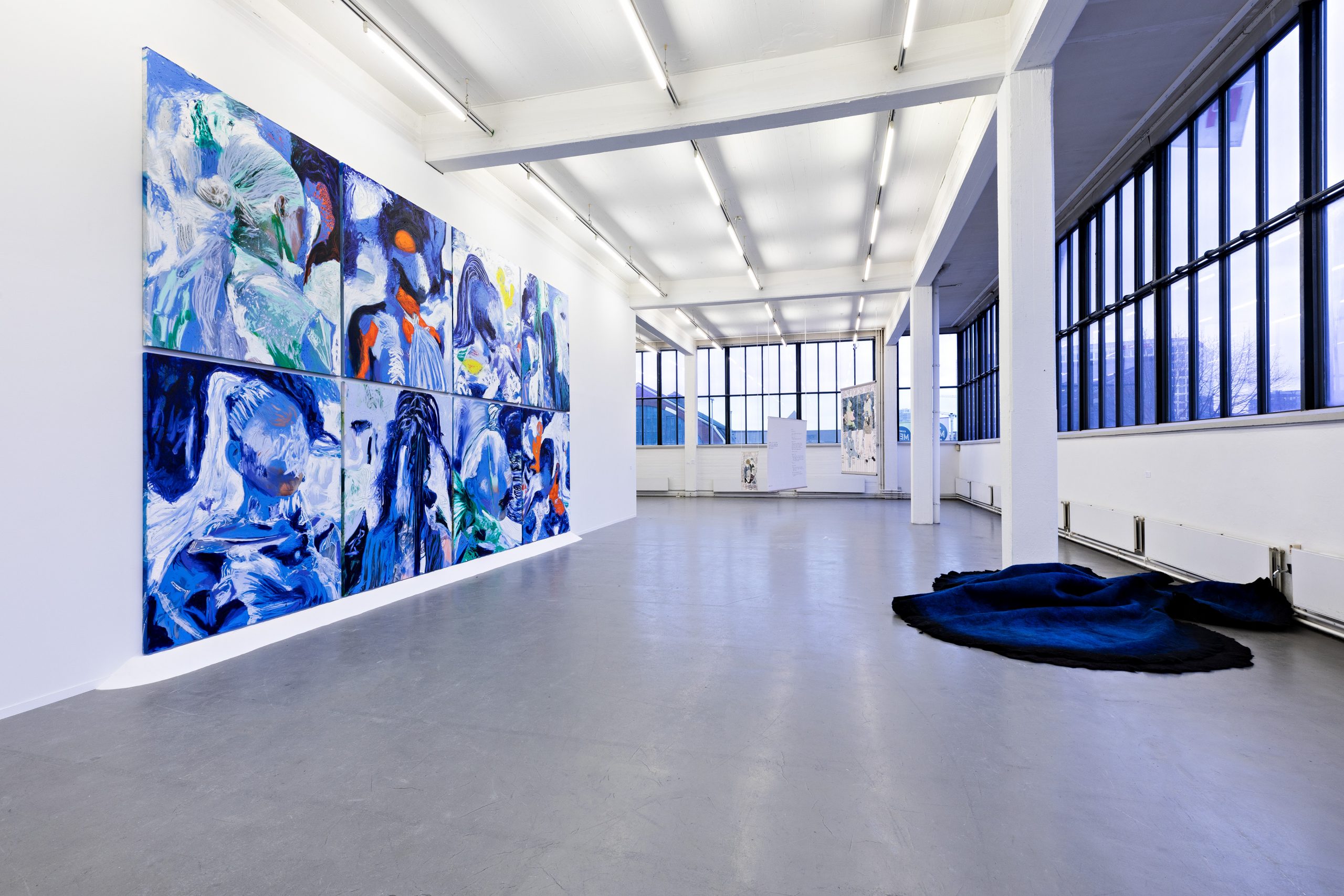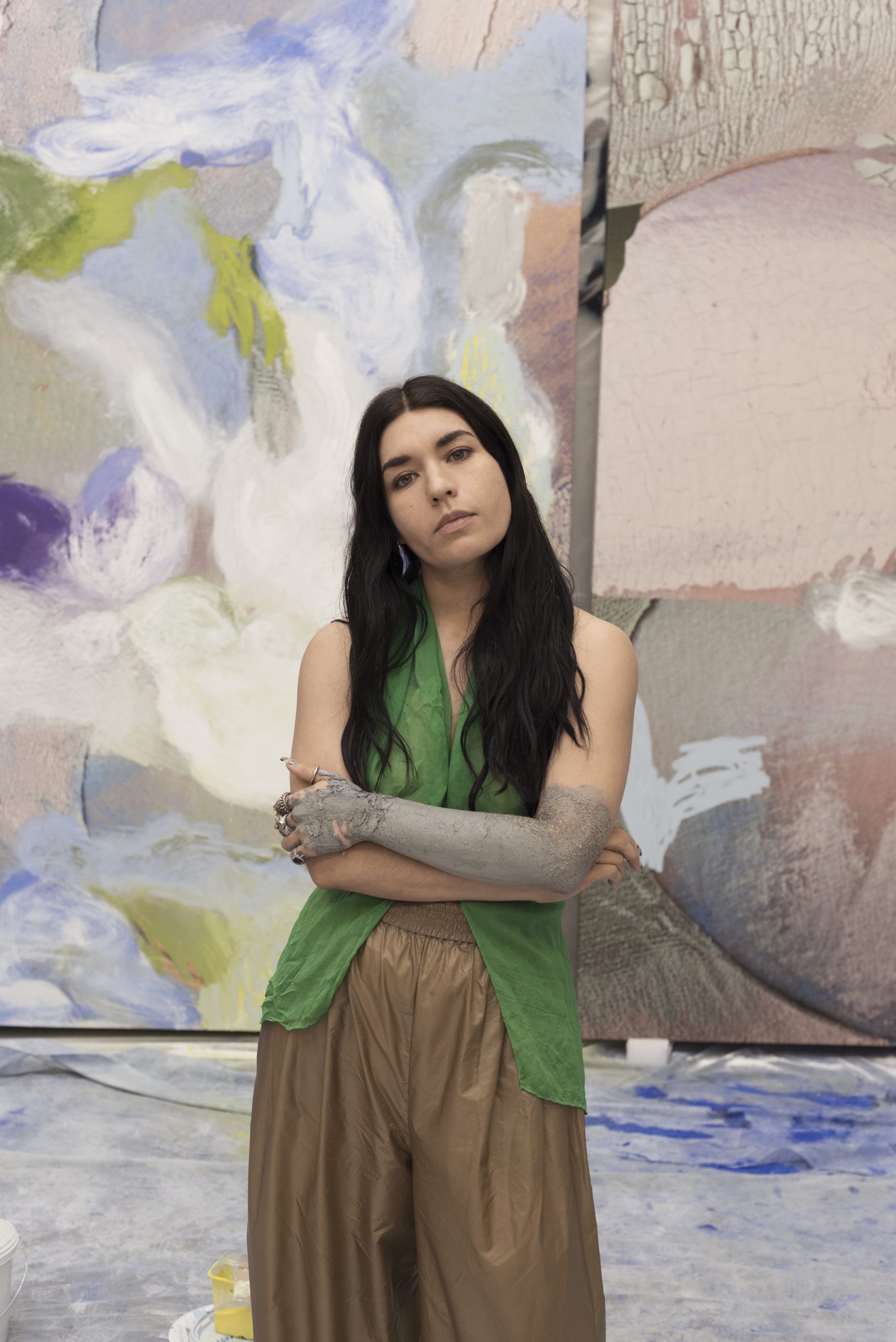Features #5 — March 2022
Donna Huanca in conversation with Nicolas Vamvouklis
Your work draws attention to the corporeal and in particular, the skin. I always found it fascinating that the skin is the largest organ of the human body. Could you tell me a bit about your live ‘skin paintings’?
They are ephemeral paintings done on the body, reacting to the specificities of each individual. The skin paintings are normally part of the performances in an exhibition, and the documentation of those performances are collaged and printed on canvas and reused in my paintings. I like to layer these different temporalities, the ephemeral is extended through the paintings, and the ephemeral lends a deciduous quality to the paintings.
I can still recall the hallucinating experience of your 2016 show “Scar Cymbals” at the Zabludowicz Collection in London, which included powerful tableaux vivants interacting with the architecture. What are the main challenges in working with performers within art institutions?
Thank you! In my work with institutions, the process always begins with a consideration of the architecture of the space. I want to reflect on the relationship we have to these types of institutions, and intervene in that sacrosanct, withholding ecosystem. My exhibitions often track movement, and leave traces of bodily presence, in spaces where the body is often erased and neglected. In terms of working with performers within those institutions, their safety and wellbeing is always my highest priority.
And how about the interaction with visitors? In which ways do you consider the audience when producing new work?
I feel that my installations are a journey that I am guiding the audience through, so I always consider the viewer first. In composing an installation I am always thinking about how the audience will move through the space, what they encounter on the way and how they interact with my sculptures and paintings. My exhibitions are immersive, I compose the smell which is connected to memory or ritualistic forms, how the soundscape washes over the audience as they move throughout the space, the light and how bright spaces can feel revealing and disorienting, while darkness can be a more solitary experience, these are all considerations and decisions that make up the process.
Let’s talk about clothes; you once said that garments evoke bodies and carry their form and spirit. Charlie Porter recently published a sort of manual / manifesto on ‘What Artists Wear’. Which are your favourite clothing items?
The characteristic technique of my practice is collage, and I have always collected textures that I reuse throughout my works. With textiles as well, I have assembled them throughout performances and sculptures in a similar way. When thinking about clothing, I am interested in how we protect ourselves, elaborate ourselves, and communicate ourselves.
“CUEVA DE COPAL” is the title of the site-specific installation you are currently presenting at Arnolfini in Bristol until May 2022. What is it about?
Yes, I am very excited to open “CUEVA DE COPAL” this February. This exhibition embraces darkness as a space for private reflection and healing. Since the pandemic, we’ve had to shift our lives, isolate ourselves for the protection of ourselves and others. For this exhibition, the performance happens behind the scenes, and the emphasis is on the audience’s solitary meditative journey through the space of the Arnolfini.
I am very interested in the transformative and meditative aspects of your practice. How can creativity become a healing force?
I think that creativity, and aesthetic experiences can be a source of disruption that help us to appreciate our surroundings, especially now as we negotiate proximity to each other, as we learn to connect through virtual means and human touch become more dangerous.
Special Thanks: Peres Projects Berlin























